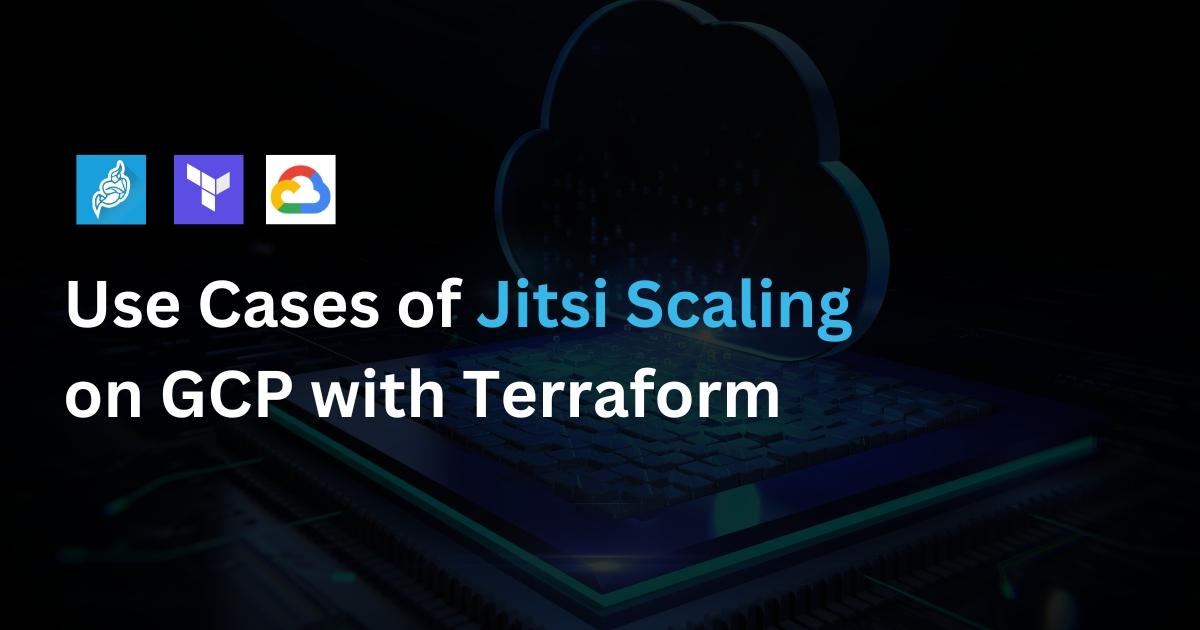Introduction
Have you ever wondered how to efficiently scale Jitsi Meet to accommodate high-demand video conferencing needs? Whether you’re hosting small meetings or large-scale events, understanding Jitsi Scaling is crucial to ensure a seamless and lag-free experience. This guide will help you navigate AutoScaling, Single Shard Scaling, and Multi Shard Scaling, ensuring your Jitsi deployment is optimized for performance and cost-efficiency.
What is Jitsi Scaling?
Jitsi Scaling refers to the process of expanding Jitsi Meet’s infrastructure to support a growing number of users without compromising quality. It ensures that video calls remain smooth, even as demand fluctuates.
Why is Jitsi Scaling Important?
- Handles Increased Traffic – Supports more participants without lag.
- Improves Reliability – Reduces server crashes and downtime.
- Enhances Performance – Ensures HD video quality and real-time communication.
- Optimizes Costs – Allocates resources efficiently to minimize expenses.
Read This: Mastering Jitsi Scaling: A Step-by-Step Guide Using Terraform on AWS
AutoScaling: The Smart Scaling Solution
AutoScaling dynamically adjusts Jitsi Meet components based on real-time demand. It ensures that resources scale up when traffic spikes and scale down during off-peak hours, saving costs while maintaining performance.
How AutoScaling Works
- Monitors server load and user activity.
- Automatically spins up new instances when needed.
- Shuts down idle resources to optimize costs.
Key Benefits of AutoScaling
- Efficient resource utilization
- Reduced manual intervention
- Enhanced performance & cost-effectiveness
Single Shard Scaling: When to Use It?
Single Shard Scaling is ideal for smaller deployments where a single server or a small cluster can handle all the traffic. In this setup, all users connect to a single Jitsi Video Bridge (JVB), making it easier to manage but with limited scalability.
Advantages of Single Shard Scaling
- Simple to deploy and manage
- Lower infrastructure costs
- Best for small teams or internal use
Limitations
- Performance bottlenecks if user count increases.
- No redundancy, meaning server failure can cause downtime.
Multi Shard Scaling: The Enterprise Solution
For large-scale deployments, Multi Shard Scaling distributes users across multiple Jitsi Video Bridges (JVBs), reducing server load and improving redundancy.
How Multi Shard Scaling Works
- Load balancers distribute traffic among multiple shards.
- Each shard has its own JVB, Jicofo, and Prosody instance.
- Users are directed to the least congested shard, ensuring optimal performance.
Key Benefits
- Supports large meetings with thousands of participants
- Redundancy ensures system stability
- Better video and audio quality
Best Practices for Jitsi Scaling
To ensure optimal performance, follow these best practices:
- Use Terraform scripts for automated deployment.
- Optimize Jitsi Scaling on GCP, Azure, or AWS for cloud-based setups.
- Implement auto-scaling policies to adjust server resources dynamically.
- Monitor system performance using Grafana and Prometheus.
- Distribute traffic efficiently with HAProxy or Nginx Load Balancer.
Conclusion
Scaling Jitsi effectively requires a strategic approach based on your user base and infrastructure needs. Whether you opt for AutoScaling, Single Shard Scaling, or Multi Shard Scaling, implementing the right scaling strategy ensures a smooth, uninterrupted video conferencing experience.
If you’re looking for expert guidance on Jitsi Scaling, reach out to our team for a customized scaling solution tailored to your needs!
FAQ
For small teams or internal use, Single Shard Scaling is ideal as it is simple to deploy and cost-effective. However, it may face performance issues as user count increases.
AutoScaling dynamically adjusts resources based on demand, ensuring high availability during peak times while shutting down idle instances during off-peak hours to optimize costs.
Multi Shard Scaling is best for large-scale deployments where thousands of participants need to be supported. It ensures load balancing, redundancy, and better video quality across multiple Jitsi Video Bridges.
Using Grafana and Prometheus for monitoring and HAProxy or Nginx Load Balancer for efficient traffic distribution can significantly improve Jitsi Meet performance.
Yes, Jitsi Scaling can be deployed on AWS, GCP, or Azure using Terraform scripts for automated scaling and cloud resource management.



